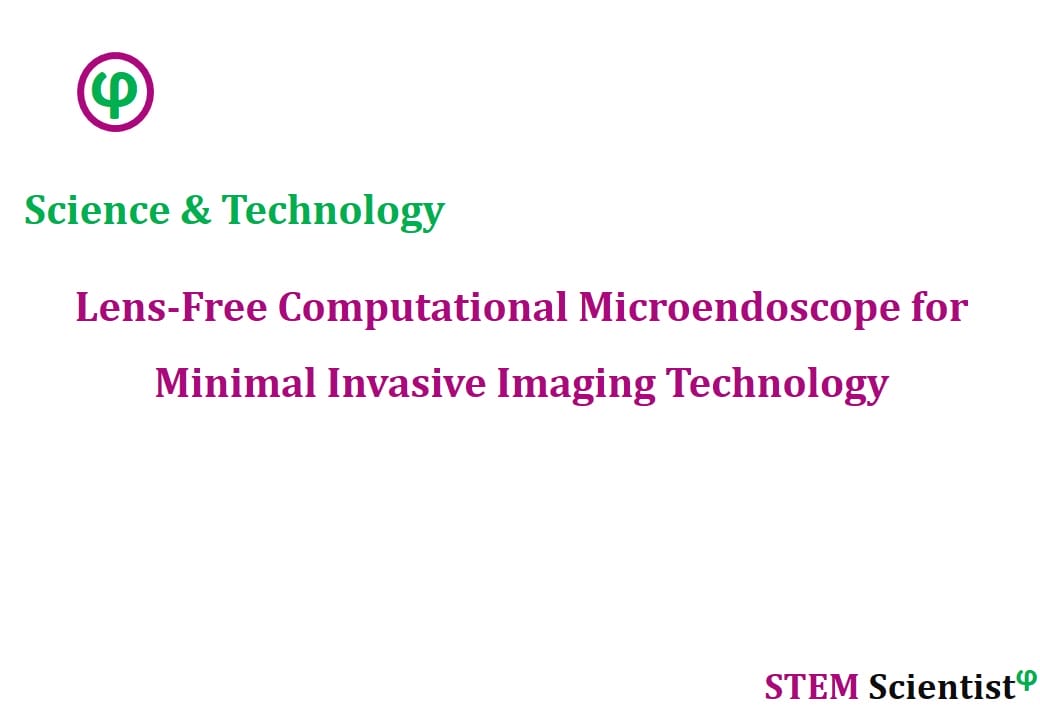
The following study was conducted by Scientists from Johns Hopkins University, Baltimore; Boston University; Massachusetts Institute of Technology; Harvard University, USA.
Scientists developed ultra-miniaturized microendoscope device specifically addressing the need for minimal invasive imaging technology. This model enables to effectively visualize intricate and less invasive regions like brain. Study is published in Science Advances Journal.
Science Advances; December 2019: Volume. 5, no. 12, eaaw5595
A Minimally Invasive Lens-Free Computational Microendoscope
Abstract
Ultra-miniaturized microendoscopes are vital for numerous biomedical applications. Such minimally invasive imagers allow for navigation into hard-to-reach regions and observation of deep brain activity in freely moving animals. Conventional solutions use distal microlenses. However, as lenses become smaller and less invasive, they develop greater aberrations and restricted fields of view. In addition, most of the imagers capable of variable focusing require mechanical actuation of the lens, increasing the distal complexity and weight. Here, we demonstrate a distal lens-free approach to microendoscopy enabled by computational image recovery. Our approach is entirely actuation free and uses a single pseudorandom spatial mask at the distal end of a multicore fiber. Experimentally, this lensless approach increases the space-bandwidth product, i.e., field of view divided by resolution, by threefold over a best-case lens-based system. In addition, the microendoscope demonstrates color resolved imaging and refocusing to 11 distinct depth planes from a single camera frame without any actuated parts.
Source:
Science Advances.
URL: https://advances.sciencemag.org/content/5/12/eaaw5595
Citation:
Shin, J., D. N. Tran, et al. (2019). “A minimally invasive lens-free computational microendoscope.” Science Advances 5(12): eaaw5595.


